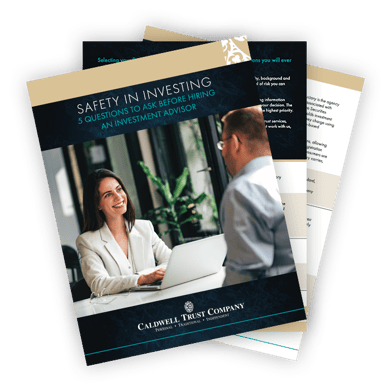 It seems almost ritualistic that about once each year, or less, we feel the need to try to bring things into a little clearer perspective because of the media’s never-ending stream of misleading financial news that tends to make so many issues seem more critical than they are. One example is the recent bubbling up of behind the scenes talk suggesting inflation is creeping back into the U.S. Economy.
It seems almost ritualistic that about once each year, or less, we feel the need to try to bring things into a little clearer perspective because of the media’s never-ending stream of misleading financial news that tends to make so many issues seem more critical than they are. One example is the recent bubbling up of behind the scenes talk suggesting inflation is creeping back into the U.S. Economy.
Briefly stated, inflation is a fall in the value of a currency relative to some constant. In the old days, that constant was fixed-price gold which served well as a measure of how many dollars it was worth at any given moment in time. This gauge went away when the gold standard was discontinued under President Nixon. Ever since, there have been about as many different definitions of inflation as there are economists.
Post gold standard, the combination of free-priced gold, crude oil prices, and commodity price indices became the most useful replacement for determining dollar strength or weakness. This lasted for quite some time, but in recent years became unreliable due to the worldwide price dislocations that occurred when China, India, the former Soviet Union nations, the Pacific area, and others emerged as economic players on the world scene. Political and tax law reforms in these industrial countries over the past couple of decades released an avalanche of demand for basic materials that has simply swamped the ability of suppliers to get up to speed production-wise.
Meanwhile, our own monetary policymakers—and now much of the rest of the free world’s monetary leadership, too—became much more sensitive to changes in currency exchange rates. Stability finally became a universal goal, both because sound money proved to be sound policy, and because it was unavoidable as the world became one giant financial system that rendered individual countries unable to control the flows of trade and money across borders.
Exchange rate in stability then became a primary mode for monetary authorities in each currency block, by becoming the most reliable signal to policy-makers as to when and why any given currency was moving in the wrong direction. When this happened, needs for economic, monetary, and fiscal policy changes in each country were made obvious.
We long ago asserted in these Letters that it was our view that classic inflation was becoming a virtual impossibility. We say this for the reason that at any given moment in time, currency markets around the world make known to monetary policy makers, minute by minute, what policy changes are called for. We still think this is so, the resulting stability of exchange rates being the proof.
Now the common definition of inflation has become the rate of change in consumer and wholesale prices, the CPI and the WPI. This is unfortunate. What seems to be raising the ugly specter of inflation today stems not from any fear of major currency devaluations, but instead from price changes that are emanating from strong demands for basic commodities in developing nations. For example, when the price of oil, or anything else for that matter, rises due to a sharp increase in demand from China, supplies cannot adjust fast enough, thus prices rise.
Not only is this normal when supplies are inadequate to demands, it is also not an indication of inflation. To repeat, price increases are not inflation, but rather are signs of healthy economic expansion. Our own Fed has actually done an excellent job by moving short term interest rates up and down in the U.S. in an effort to facilitate economic growth while still protecting against any devaluation of the dollar.
Political problems in those parts of the world that supply a lot of our own commodities are adding to upward price pressures even though supplies, as in the case of oil, are more than adequate to meet current demands. It is the future that has caught the attention of speculators and this is a totally different issue. Environmental and other concerns in the U.S. are largely responsible for a lack of preparation for, or an unwillingness to address, the demands of an energy-devouring system such as we have.
The good news from all this is that it now appears that the under investment in exploration and refining capacity may be on the way to being rectified. This means there are now huge new capital expenditures coming to try to produce products to meet consumer demands in all free, fiscally stable countries. New capital spending in turn drives employment, industrial demand, and investor opportunities. The risk that this could increase the demand for labor and labor costs will escalate has a solution: encourage businesses to invest so as to continue productivity increases at a rate greater than the rise in employment costs. And that has been happening in the U.S. now for some time.
The quarrel the lesser-developed nations and their peoples have with our advanced economy here in the U.S., and now with the economies of China, for instance, is a political issue. Unfortunately, there is little that the peoples of the more advanced economies can do to eliminate or reduce such tensions purely on the basis of economic policies alone. Religious and cultural passions have never advanced anyone’s economic well being. This is unlikely to change anytime in the foreseeable future. Accordingly, it is now important for investors to realize this and to deal with it in their own individual ways. To the extent the majority in any country believes more government is needed or is the preferred way to throttle a free economy, in every case where this has been tried, the citizens of that country have faced a diminution of both their freedoms and their own well being.
To the extent that voters are free to choose, yet choose to encumber themselves—albeit for humane and honorable reasons—with more restrictions economically via taxation or regulation, they have every right to do so. The ultimate outcome of that choice, however, has always been lessened vigilance and a reduced military capability to defend themselves, including those very same people who voted in favor of that route in the first place. It is not needed for us to explain here today the obvious outcome of following such a course.
CONCLUSION: The U.S. Economy remains strong and vibrant, inflation is under excellent control worldwide where it matters, employment opportunities abound everywhere, consumer confidence is rising, capital spending plans are being stepped up, and formerly closed systems around the world are opening up and enjoying unprecedented economic expansion. In the U.S., the elderly and infirm are front and center concerns for everyone regardless of political stripe. Environmental attention is by far the most productive in the advanced economies, and expansion of government controls and spending in aggregate has been almost non-existent over the past two decades in the U.S. Yes, religious and cultural animosities have turned more violent, creating political tensions that are discomforting to all free peoples. Yet, economic expansion and its attendant benefits remain as the only hope for spreading improved conditions into some of the most backward areas on our planet. Though debate is often hot and heavy and will never end for those who remain free to speak out, the net result is that there is perhaps more maturity and opportunity for investors than ever before in the short history of this free nation.
Those who are critical of and continue to believe that the profits being earned by a major enterprises belong to the companies, are probably the same ones who think the money the government spends came from the government. Unfortunately for them, they are destined to be left behind while those who understand that profits belong to the investor will benefit. But in the end it can only go to those who are free and willing to take the risks inherent with ownership. In modern times, there has not been a more favorable climate for investing in quality stocks.










